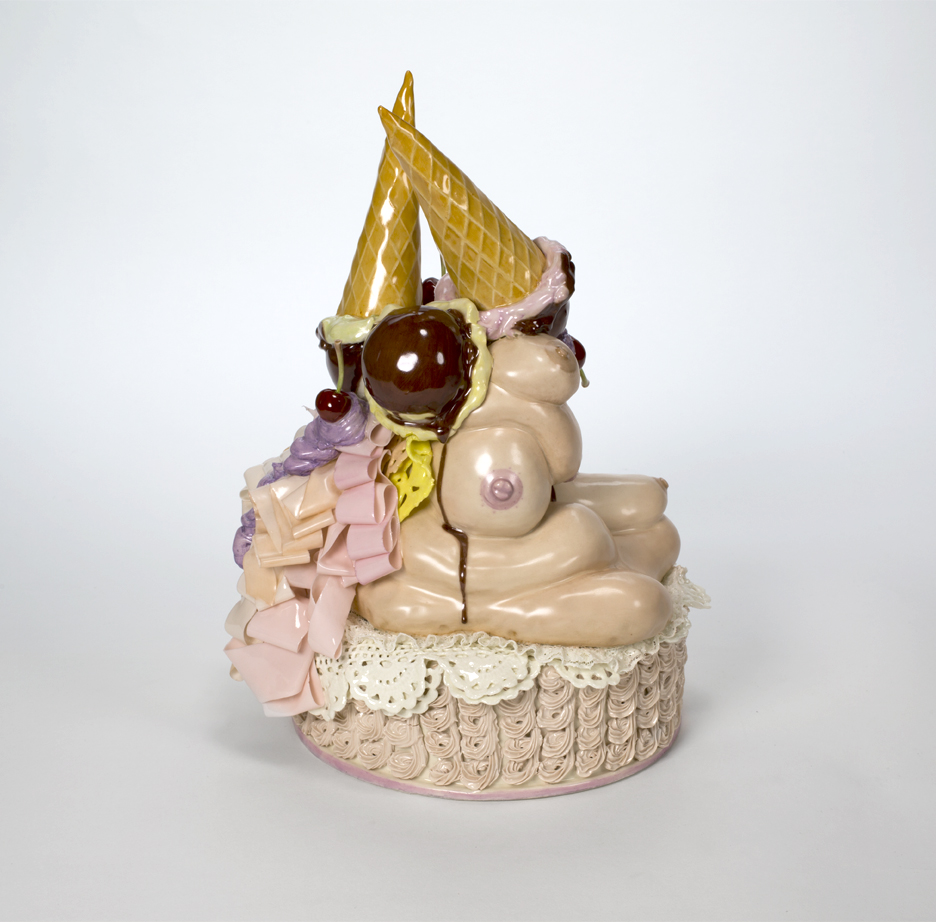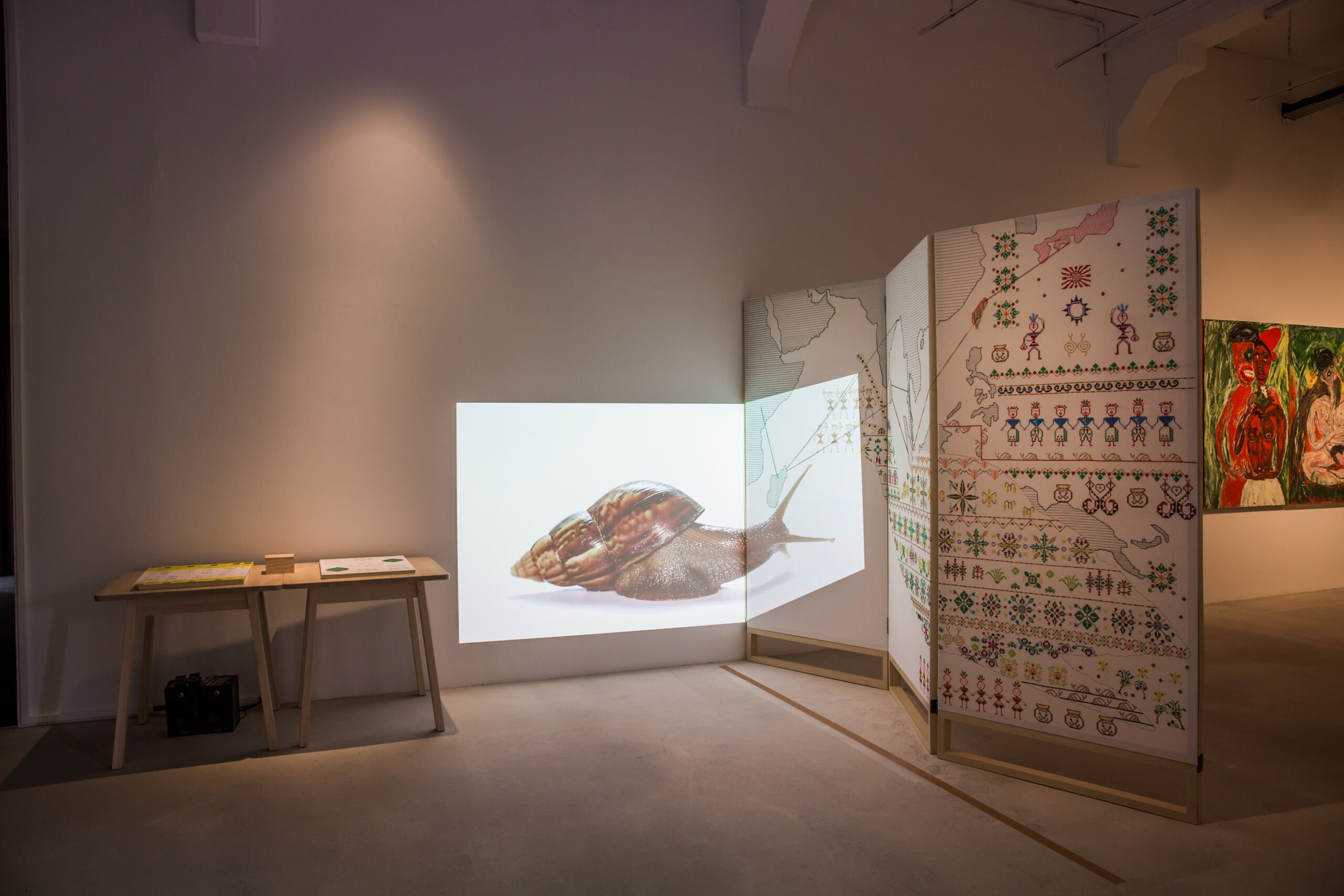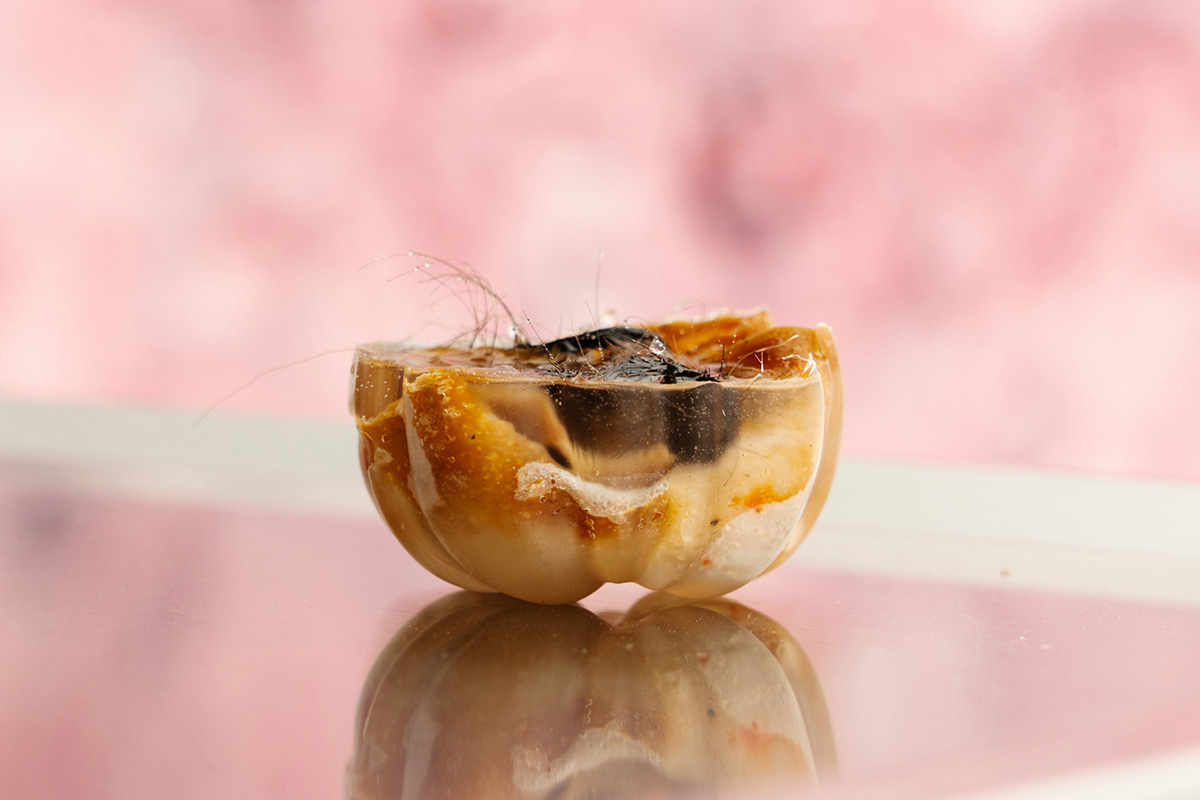Ooey gooey desserts drenched in chocolate syrup pour over busts of women and other porcelain effigies in a collection of pieces by artist Jessica Stoller. The ceramicist has been working in ceramics for over a decade, and the result is a sharp contrast from the standard dainty, chantilly lace-clad figurines par for the course in the medium. Stoller is intentional in her use of sweets, women and porcelain, drawing connections between the three and highlighting historical, biological and societal intersections.
 Untitled (stack), 2013, porcelain, glaze, china paint, 12”x 7.5”x 9”
Untitled (stack), 2013, porcelain, glaze, china paint, 12”x 7.5”x 9”
“On a basic level women’s bodies provide food and have been depicted in clay as powerful fertility figures for millennia,” Stoller says. “Porcelain has a long history of being coveted and exoticized in Imperial Europe, prized for its beauty and used to signify class and taste. As patriarchy derailed women’s primordial power, women’s bodies have also been highly fetishised and simplified for mass consumption. Not to mention being physically compared to porcelain, an unrealistic standard of perfection, homogeneity and whiteness.”
 Untitled (epergne), 2014, porcelain, glaze, china paint, 9.5″x 7.5″ x 7.5″
Untitled (epergne), 2014, porcelain, glaze, china paint, 9.5″x 7.5″ x 7.5″
The artist employs a myriad of techniques in her work—sculpting, draping, carving, weaving and piping—to create a wide range of effects from wrinkled flesh to plump frosting. “Food plays an important role in my work and, surprisingly, working with wet clay is very food like,” Stoller says. “I use frosting bags, icing tips, immersion blenders, and kitchen implements when working on my sculptures, hence making the work look like food is not too challenging.”
 Untitled (tar), 2014, porcelain, glaze, china paint, 9.5″x 8.5″x 6″
Untitled (tar), 2014, porcelain, glaze, china paint, 9.5″x 8.5″x 6″
 Untitled (still life), 2014, porcelain, glaze, china paint, lustre, enamel, wire, wood, 63″x 60″x 26.5″
Untitled (still life), 2014, porcelain, glaze, china paint, lustre, enamel, wire, wood, 63″x 60″x 26.5″
“In terms of content, food is very charged and specifically ties to ideas I am interested in regarding femininity and consumption,” Stoller says. “Specifically, I have been interested in the feminization of sugar and have moved farther back to examine colonialisms ties to sugar, porcelain and power.”
Also on the topic of food, Stoller also recently took part in The Artists’ and Writers’ Cookbook: A Collection of Stories with Recipes by Natalie Eve Garrett, and will be exhibiting at Zuckerman Museum of Art Galleries in Georgia early next year.















